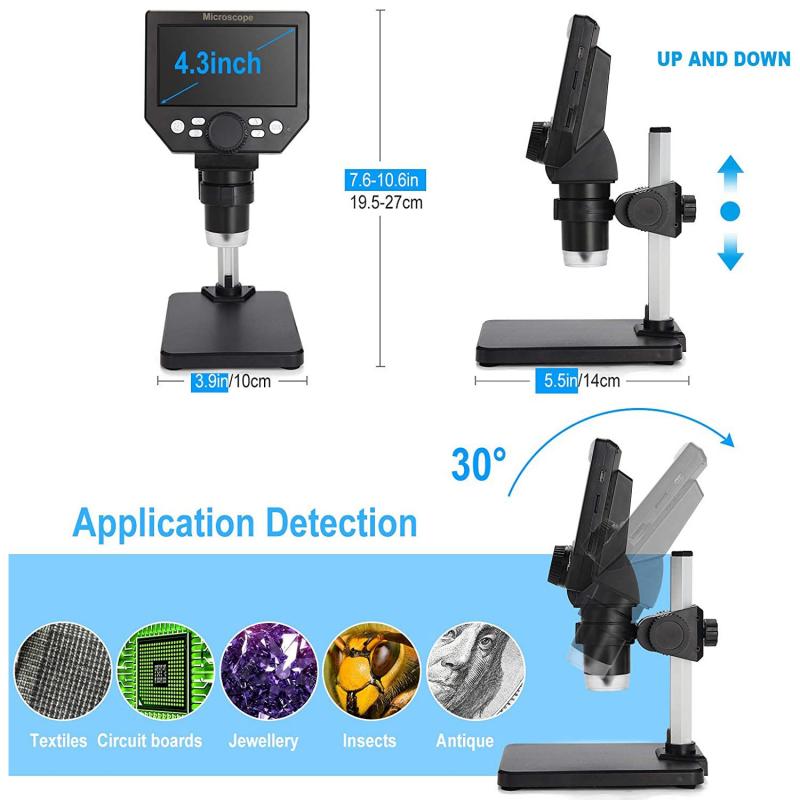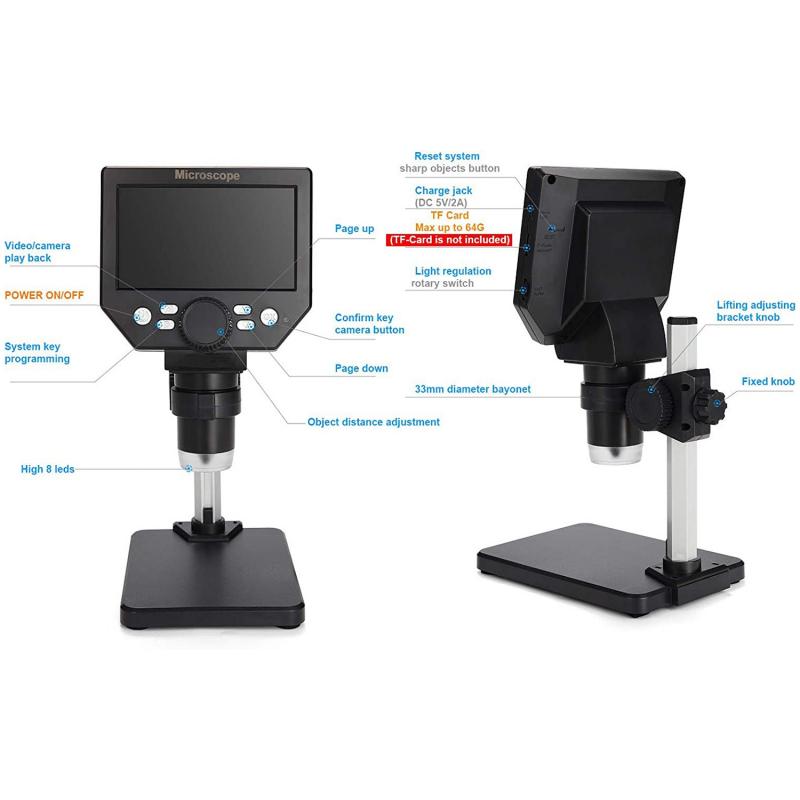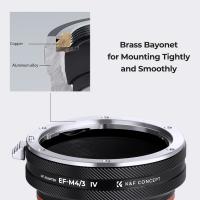What Can You See With A Light Microscope ?
With a light microscope, you can see a variety of specimens such as cells, tissues, bacteria, fungi, and small organisms. The light microscope uses visible light to illuminate the specimen and magnifies it through a series of lenses. The magnification power of a light microscope can range from 40x to 1000x, depending on the objective lens used. This allows for the observation of the internal structures of cells and tissues, as well as the morphology and behavior of microorganisms. Light microscopes are commonly used in biology, medicine, and research to study the structure and function of living organisms and their components.
1、 Cell structure and organelles
With a light microscope, it is possible to see the basic cell structure and organelles of living organisms. This includes the cell membrane, cytoplasm, nucleus, mitochondria, ribosomes, and endoplasmic reticulum. The cell membrane is the outermost layer of the cell that separates the inside of the cell from the outside environment. The cytoplasm is the gel-like substance that fills the cell and contains all the organelles. The nucleus is the control center of the cell that contains the genetic material. Mitochondria are the powerhouses of the cell that produce energy. Ribosomes are responsible for protein synthesis, while the endoplasmic reticulum is involved in protein and lipid synthesis.
Recent advancements in light microscopy have allowed for higher resolution and better visualization of cellular structures. Super-resolution microscopy techniques such as stimulated emission depletion (STED) microscopy and structured illumination microscopy (SIM) have enabled scientists to see structures as small as 20 nanometers. This has led to new discoveries about the organization and function of organelles within cells.
Overall, while light microscopy has its limitations, it remains a valuable tool for studying cell structure and organelles. With continued advancements in technology, it is likely that we will continue to gain new insights into the complex world of cellular biology.

2、 Tissue architecture and organization
With a light microscope, it is possible to see tissue architecture and organization. This includes the arrangement of cells within a tissue, the shape and size of individual cells, and the presence of any cellular structures such as organelles. Light microscopy is commonly used in histology, the study of tissues, to examine the structure and function of different tissues in the body.
Recent advances in light microscopy have allowed for even greater resolution and clarity in imaging tissues. Techniques such as confocal microscopy and two-photon microscopy have enabled researchers to visualize tissues in three dimensions and to study cellular processes in real-time. Additionally, the development of fluorescent probes and dyes has allowed for the visualization of specific cellular structures and molecules within tissues.
With these advancements, light microscopy has become an essential tool in many areas of research, including developmental biology, cancer biology, and neuroscience. By visualizing tissue architecture and organization, researchers can gain insights into the mechanisms underlying disease and identify potential targets for therapeutic intervention.
In summary, a light microscope can be used to see tissue architecture and organization, and recent advancements in light microscopy have allowed for even greater resolution and clarity in imaging tissues. These advancements have made light microscopy an essential tool in many areas of research, providing insights into the mechanisms underlying disease and identifying potential targets for therapeutic intervention.

3、 Microorganisms and their morphology
With a light microscope, it is possible to see microorganisms and their morphology. Microorganisms are tiny living organisms that are too small to be seen with the naked eye. They include bacteria, viruses, fungi, and protozoa. Light microscopes use visible light to magnify the image of the specimen, allowing us to see the details of their morphology.
Bacteria are one of the most common microorganisms that can be seen with a light microscope. They are single-celled organisms that come in a variety of shapes, including spherical, rod-shaped, and spiral. The morphology of bacteria can provide important information about their function and behavior. For example, the shape of some bacteria can help them move through their environment or attach to surfaces.
Fungi are another type of microorganism that can be seen with a light microscope. They are multicellular organisms that can take on a variety of shapes, including spherical, filamentous, and complex structures. The morphology of fungi can provide important information about their life cycle and reproductive strategies.
Protozoa are single-celled organisms that can also be seen with a light microscope. They come in a variety of shapes and sizes, and their morphology can provide important information about their behavior and function. For example, some protozoa have specialized structures that allow them to move through their environment or capture prey.
In recent years, advances in microscopy technology have allowed us to see microorganisms in even greater detail. For example, confocal microscopy and super-resolution microscopy have enabled us to see the internal structures of cells and the interactions between microorganisms and their environment. These advances have provided new insights into the behavior and function of microorganisms and have opened up new avenues for research.

4、 Blood cells and their characteristics
With a light microscope, it is possible to see blood cells and their characteristics. Blood cells are classified into three main types: red blood cells (erythrocytes), white blood cells (leukocytes), and platelets (thrombocytes). Red blood cells are the most abundant cells in the blood and are responsible for carrying oxygen to the body's tissues. They are small, biconcave discs that lack a nucleus and other organelles. White blood cells, on the other hand, are larger and have a nucleus. They play a crucial role in the immune system, defending the body against infections and foreign substances. Platelets are small, irregularly shaped cells that help in blood clotting.
Under a light microscope, red blood cells appear as small, round, and uniform in size. They are easily distinguishable from white blood cells and platelets. White blood cells, on the other hand, are larger and have a more irregular shape. They can be further classified into different types based on their appearance and function. Platelets appear as small, irregularly shaped fragments that are involved in blood clotting.
Recent advancements in light microscopy have allowed for the visualization of blood cells in greater detail. For example, confocal microscopy allows for the imaging of cells in three dimensions, providing a more detailed view of their structure and function. Additionally, fluorescence microscopy can be used to label specific molecules within cells, allowing for the visualization of cellular processes in real-time.
In conclusion, a light microscope can be used to observe and study blood cells and their characteristics. Recent advancements in light microscopy have allowed for the visualization of cells in greater detail, providing new insights into their structure and function.








































